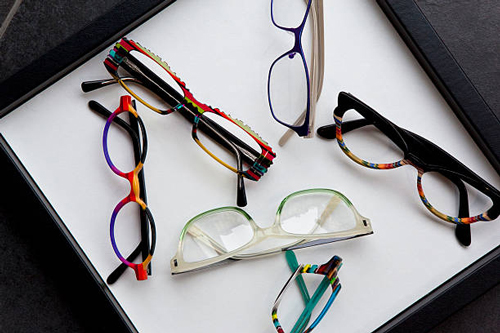During the recent holidays, it was easier to delve more deeply into my secret-shopping of various brick-and-mortar opticals. The increased foot traffic allowed me to blend in more easily, while the influx of new merchandise for holiday and FSA shoppers provided lots of new stuff to look at and created new sorts of interactions with staff. For the most part, it was unremarkable. In spite of the stress of the season, opticians were on their best behavior—no eight “Are you still doing OK?”s in the course of twenty minutes, as I recalled in an earlier column, or belligerent sales staff trying to pressure me into buying something. In fact, my experiences were downright pleasant. I’ve been encountering a certain technique more and more lately, though, and it’s given me a bit of food for thought about how we present our frames to our patients off the frame board.
 Several chain and big-box opticals have—it seems recently—adopted the standard practice of offering browsing patients a jewelry tray or even a customized, slotted box with which to carry or set aside frames they’re considering purchasing. It’s a development that I like, and which has made me think quite a bit about what I’m going to call the “chain of presentation,” though I’m certain it’s got a more official name. Simply put, we think about how our frames look on the board, and we think about how they look when we’re dispensing them; but how often do we consider how the frames appear to the patient during the actual selection and sales process? I know that I—and other opticians at offices I’ve worked—have been guilty of either allowing (or even encouraging) patients to simply set frames on a dispensing table or even the counter, creating unsightly piles that look as though they were dumped; or even given patients clunky, neon-colored frame trays to cart around with them. Why did it never occur to me, though, that the frames—high-dollar medical devices that’ve been likened to jewelry, fashion accessories, and personal statements about the wearer—should never appear to have their value diminished? And that I was allowing exactly that to happen by not considering the display of the frames once they came off the board?
Several chain and big-box opticals have—it seems recently—adopted the standard practice of offering browsing patients a jewelry tray or even a customized, slotted box with which to carry or set aside frames they’re considering purchasing. It’s a development that I like, and which has made me think quite a bit about what I’m going to call the “chain of presentation,” though I’m certain it’s got a more official name. Simply put, we think about how our frames look on the board, and we think about how they look when we’re dispensing them; but how often do we consider how the frames appear to the patient during the actual selection and sales process? I know that I—and other opticians at offices I’ve worked—have been guilty of either allowing (or even encouraging) patients to simply set frames on a dispensing table or even the counter, creating unsightly piles that look as though they were dumped; or even given patients clunky, neon-colored frame trays to cart around with them. Why did it never occur to me, though, that the frames—high-dollar medical devices that’ve been likened to jewelry, fashion accessories, and personal statements about the wearer—should never appear to have their value diminished? And that I was allowing exactly that to happen by not considering the display of the frames once they came off the board? So I’m pleased to see that chain and big-box have come to this realization and are addressing the situation appropriately. I’ve been offered black-velvet jewelry trays. I’ve been offered customized, leather-bound boxes with cream satin lining. Every tray has been aesthetically beautiful with its own unique benefits and appearance, and all of them have conveyed the same visual message: These frames, too, are beautiful, valuable, and not to be taken lightly.
Does your dispensary have to drop big money on custom-made trays? Of course not. Odds are, you already have some sort of jewelry tray you use for dispensing—that’ll work nicely, and it’ll create a cool “full circle” effect when you bring out the same tray patients used to select their frames to dispense them. If you want to make the investment, it can’t hurt to have your own unique “selection box.” Ultimately, though, it’s time for every dispensary to make offering patients their own selection tray a routine part of the frame selection process. It’ll encourage them to think about their frames in a whole new light, and instill a true sense of their value. And maybe, with that value in mind, they’ll end up choosing more than one set of frames from that tray.











